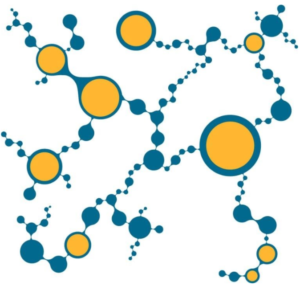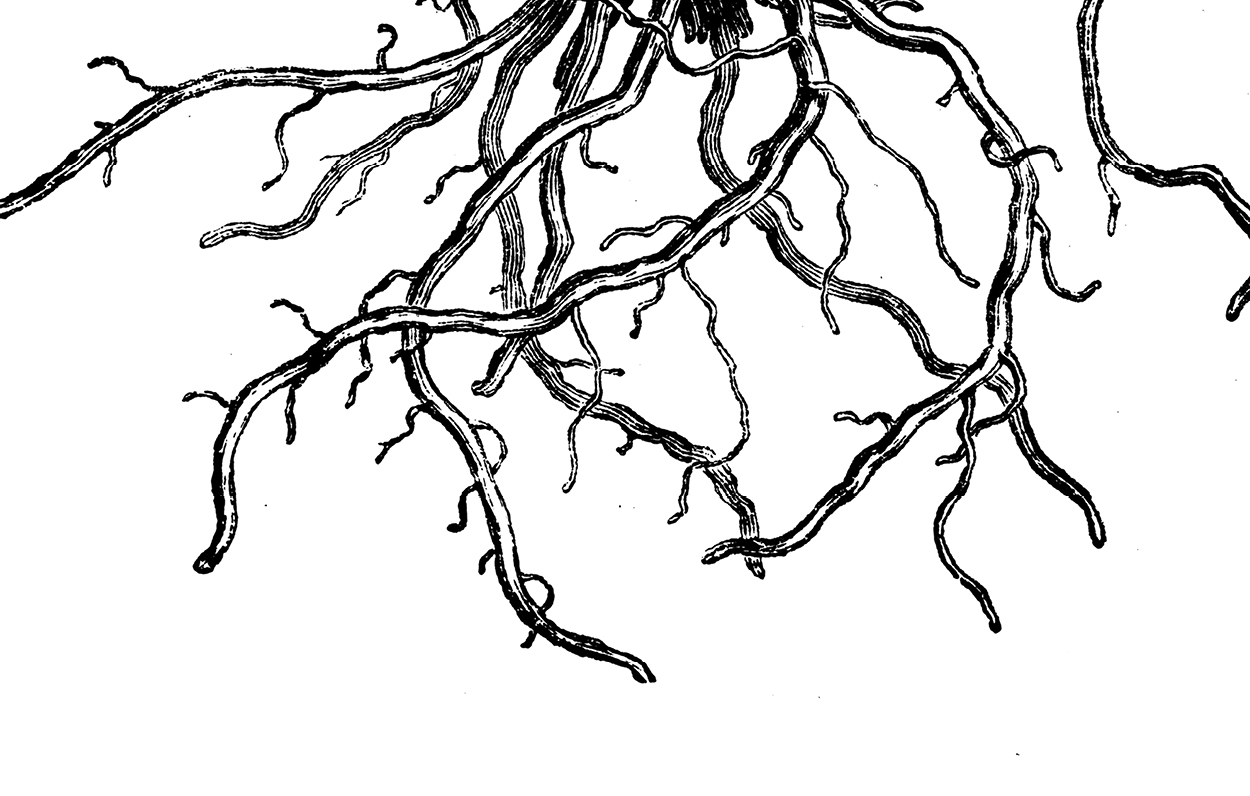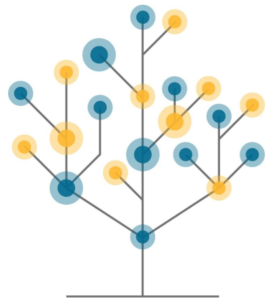What does it mean to be innovative in business? When it comes to finding new opportunities for revenue generation, identifying future industry trends, directing research & development efforts, or capitalizing on previous experiences to gain actionable insights, innovative is just the thing we all want to be. But how well do we actually understand this concept? Can it be measured? Can we truly understand what makes an individual, a team, or an entire company be likely to innovate? Is innovation like a plant: a system to be taken care of, nurtured and tended? And if so, what does it feed off of?
The answer may lie in Organizational Theory. Organizational theory is a key part of understanding how social units of people come together in pursuit of collective goals. In this article, we look at an unlikely ally to help answer the questions above: the post-structuralist philosophy of French philosopher Gilles Deleuze. His work on the way we structure our thoughts and organize ourselves gives us glimpses into how we can identify and catalyze human potential into action, and encourage innovation by understanding its underlying shape, all while drawing inspiration from a peculiar botanical structure: the rhizome.
Rhizome Philosophy: Roots and Trees
Nature has always been a source of inspiration: from bird wings’ aerodynamics to the behavior of an ant colony, science, both theoretical and practical, has always found useful metaphors and analogies in the rich biodiversity of our world. The very way we think has also been shaped by structures inspired in nature: family trees, evolutionary trees… in technology, we use botanical terminology constantly: code repositories have trunks and branches, file systems have roots, not to mention a tree is a very popular data structure.
Organizational theory is no stranger to this thinking; traditional organizational charts resemble trees, with someone at the head (the root) of a company, and branching paths separating clearly defined levels of hierarchy. Beyond explicit representations, we also subconsciously use this structure to categorize or evaluate ideas and experiences: if a museum curator thinks they know what ideal “art” looks like, they might want to put all paintings that fit this definition in the museum’s main hall, then place paintings that are closest to this ideal in the adjacent halls, and so on and so forth, until the most unusual paintings, according to this taxonomy, are in the furthest reaches of the museum. Hierarchy is integral to the tree structure.
This “tree-shaped” way of thinking is what Gilles Deleuze calls “arborescent thinking”, and he warns of its shortcomings in his and semiologist Felix Guattari’s treatise “A Thousand Plateaus”. They argue that insisting on using this mode of thought exclusively to represent how our world works and how we organize ourselves can lead to limiting the way we approach everyday problems, and to misunderstandings about how human potential can be catalyzed into action. Exclusively relying on arborescent thinking can lead a group or society to strive towards sameness and homogeneity, a “stable tree”, rather than create an environment that encourages new ideas and, ultimately, innovation.
This “tree-shaped” way of thinking is what Gilles Deleuze calls “arborescent thinking”, and he warns of its shortcomings in his and semiologist Felix Guattari’s treatise “A Thousand Plateaus.”
Rhizomatic Thinking
Looking to present an alternative to this mode of thought, Deleuze and Guattari introduce the idea of “rhizomatic thinking.” A rhizome, like crabgrass or ginger, is also a botanic structure we can commonly find in nature. However, unlike trees, they don’t have a well-defined shape composed of a central trunk, instead growing seemingly haphazardly into wildly diverging configurations. Deleuze offers 5 principles that define the rhizome structure:
1 and 2. Principles of connection and heterogeneity: “…any point of a rhizome can be connected to any other, and must be”;
3. Principle of multiplicity: it is only when the multiple is effectively treated as a substantive, “multiplicity”, that it ceases to have any relation to the One;
4. Principle of a-signifying rupture: a rhizome may be broken, but it will start up again on one of its old lines, or on new lines;
5. Principle of cartography and decalcomania: a rhizome is not amenable to any structural or generative model; it is a “map and not a tracing.”

Unlike trees, rhizomes don’t have a well-defined shape composed of a central trunk; instead, growing seemingly haphazardly into wildly diverging configurations. Growth does not follow one singular objective or guiding principle but can come from anywhere, which would make the whole structure more resilient to failure, as it would have no central “trunk” to be cut.
This may seem abstract and hard to grasp at first, but it’s really a detailed breakdown of how Deleuze imagined a how rhizome Philosophy would be implemented: rather than segmenting the organization into discrete units, communication between participants would be ubiquitous no matter their role, so connections, ideas and collaborations between individuals could sprout from anywhere. The behavior of the group would be understood as coming from multiple people and multiple efforts, not a single individual or group dictating its direction. As a result, growth would not necessarily follow one singular objective or guiding principle, but could come from anywhere, and this would make the whole structure more resilient to failure, as it would have no central “trunk” to be cut.
In the years since its proposition, this structure of thought has been used by a wide variety of fields in their inquiry into group patterns and behaviors; some activist groups such as Occupy Wall Street, for example, have been famously difficult to parse by news organizations because of their lack of formal hierarchy, there was no trunk to taxonomize their ideas from. Instead, groups like these come to be out of a multiplicity of ideas and grow in different directions, spurring other groups and actions that reverberate to this day. This sort of “organized aimlessness” might also bring to mind spaces designed to foster innovation in our own industry: hackathons, hacker spaces, and project incubators.
Organization theory is one of the fields on which Deleuze’s rhizome philosophy has had a bigger impact. The way in which organizations work towards a well-defined goal, much like how a company comes together to fulfill its main business goals with consistency and reliability, can differ widely from the process of innovation: like crabgrass’ growth, we can’t know where the next insight will come from, or what seemingly unrelated area might prove to be the key that spurs it, even if it had seemed like a dead end before.
Might we find a way to understand, and tend to, this garden?
A Rhizome Philosophy of Difference
A second important aspect of Deleuze’s philosophy is that it is often referred to as a philosophy of difference, as opposed to more classic philosophical currents that talk about and strive towards similitude.
Take Plato as an example, a classic philosopher that has influenced much of western culture, down to the very way we think, even when it comes to how we run our businesses. One of his most significant contributions was his Theory of Forms, which asserts that for every physical thing in the real world, there is an “ideal”, abstract version of that thing. There may be many tables in the world, but all of them have a core essence, a “tableness” that defines them as such. We know nowadays that our brain recognizes a table as such thanks to its ability to learn and recognize patterns (a methodology we have successfully leveraged through neural network algorithms for complex machine learning tasks), but given our technological advantage, it would be unfair to mock Plato’s ideas.
Much of how we judge and assign value to what we experience, use, or even who we meet, however, is indirectly influenced by this theory. The implicated existence of an ideal inevitably turns it into an aspiration. For example: when looking for a software developer to fill a position within a project, we’re often searching for someone that approaches our ideal of who that developer should be, and judge them based on that imaginary someone – a search based on similitude. It’s no coincidence that the term “unicorn” is often used when looking for highly skilled developers. Having to settle or compromise on people who only partially match that ideal is a source of frustration for many.
Deleuze’s philosophy, on the other hand, is interested in highlighting and assigning value, not to objects themselves, but the connections between them. Part of what Plato’s Theory of Forms misses is how much information we gather from the difference between different objects and concepts. Take colors, for example; we may recognize the color blue, but it is only through its relationship and interaction with other colors, like red or yellow, that we can develop a color theory and all of the breakthroughs that come with it.
Following what was said about rhizome Philosophy above, Deleuze argues heterogeneity breeds innovation: the more difference that exists between two concepts, the more likely it is that a truly new idea can emerge, while the more similar they are, the less opportunity for innovation there is.

The circles in the illustration above are all the same color, yet their relation to the surrounding colors makes you experience them completely differently. The Philosophy of Difference asserts that our experience of things is less related to the attributes of the things themselves, and more to their differences with the surrounding environment.
Many technological breakthroughs can be analyzed this way. Something as ubiquitous as YouTube can be regarded as an example of an innovative idea emerging from the connection between existing concepts: television, the internet, phone cameras (themselves a product of another relationship). The value of an experience or an object or even a person cannot be solely determined by their appraisal in a vacuum, but from their value, as an addition to the environment they’re a part of, and the lines of flight and opportunity that this creates. The value of the developer we hire may not be in how similarly-skilled they turn out to be to our existing teams, but their difference.
Fostering Innovation Through Deleuze’s Lens
Reflecting upon these concepts isn’t only an academic exercise; it can, in fact, lead us to valuable insights about how we can reshape parts of our organization or processes to encourage the emergence of innovation, or even recognize things we are already doing right and use them to lead us towards innovation in effective ways. Though rhizome philosophy may sound novel, their implementation within an organization should seem much more familiar, and they are far-reaching in terms of the processes and organizational structures that can benefit from them. Here are a few examples – practiced at GAP – that you can implement in your organization to catalyze innovation:
Make Communication Ubiquitous
Hierarchy is inevitable in modern companies, but this doesn’t mean we cannot leverage the innovation-stimulating properties of a rhizomatic organization through the communication layer of our company. If we know innovation can sprout from an unlikely pairing of technological subjects or employees that have never worked on even remotely similar projects, we must strive for those lines of communication to be open and available within our organization.
At GAP, our Centers of Excellence are separated by technology groupings that may seem apart, but in reality, maintaining lines of communication between them has led to breakthroughs both in the ways they work – how they make it more likely for our members to succeed at their certification exams, or how an interactive roadmap created by one Center can be leveraged by the others to develop their own – and the way we solve problems for our clients – how different types of data visualizations can empower reports or dashboards regardless of their domain context, or how members of different teams can come together to propose innovative architectures and other solutions.
Revise Your Hiring Practices
If you want an innovative team, beware of sameness. It goes without saying that having well-defined skill sets and other types of qualifications when looking to hire can be essential to the success of whoever will eventually fill a given position, but especially when hiring into an already established team or practice, be sure to value what their addition to the team will bring to the table. As your teams grow, you might even want to start increasing how much you value these contributions over your usual checklist. Much has already been said about the importance of hiring diverse teams, but it must be a priority when looking to turn your teams into innovation powerhouses.
At GAP, we strive to implement comprehensive hiring processes that encompass both an in-depth look at each candidate’s qualifications and skillsets in relation to the position being filled, as well as an understanding of what they can bring to GAP at different levels such as their team, the practices they’ll potentially contribute to and the company overall – from a technical and cultural perspective. In well-established teams, we look for opportunities that will expand both their technical know-how and their potential for innovation. We partly attribute our high retention rate – noticeably higher than the industry’s average – to the added effort we leverage throughout our hiring and placement practices.
Make Knowledge Sharing Part of your DNA
It’s not enough just to flatten your communication structure and have those lines of contact open. Everyone might be a couple of clicks away on your company Slack, but if these lines aren’t promoted and used, it’s unlikely the level of collaboration you’re looking to achieve will be reached on its own. By creating opportunities that rely on this model, embracing employees’ non-primary interests and reducing technological segmentation, we can keep these lines well-oiled and healthy. This means promoting knowledge-sharing events that are as open as possible – don’t restrict a series of workshops to a single technology or domain, promote them company-wide, and don’t discourage low-level talks or content that may be of interest to those who might want to start wading into a new field.
At GAP, knowledge-sharing events are happening constantly and promoted across all of our practices; our culture promotes content generation, and this leads to new knowledge rarely being kept in one person’s hands but rather shared proactively in the form of workshops, university collaborations, external event participation, and blog posts like this one. Introductory talks are also encouraged, as we recognize employee interests are constantly in flux, and their involvement with, or transfer to, a new field after years of experience in another can bring about surges of innovation. Making sure employees nurture their own interests have also led to unexpected benefits – we’ve seen QA engineers innovate in automation techniques by employing novel data wrangling methods, security software improved through someone’s interests in ethical hacking, and whole architectures improved through someone’s curiosity about serverless and microservice-based design.
Create Spaces Dedicated to Innovation
There are proven models of collaborative work that we know promote innovation, and their rhizome-like organizational structure are no coincidence. Hackathons in which different parts of a company come in contact with each other, project incubators where employees are encouraged to come forward with their own initiatives, or other R&D initiatives where different fields can come together can be specifically designed to foster rhizome-like interactions, and, in turn, innovation.
At GAP we highly value these spaces; and have come to understand one of the biggest obstacles to hosting a successful innovation space is recognizing it as a separate structure with different goals from those of our business, in order to allow for the appearance of disruptive ideas and gradual growth. We recognize innovation as a catalyst for new opportunities and even external visibility, without necessarily having to tie a given project to an expected return of investment or company goal. Our GAPLabs department has created spaces for interdisciplinary research, such as employees from multiple projects coming together to collaborate on the creation of a cluster hosting our own homebrew cloud environment, with which we are able to host workshops and other events.
Conclusion
As is evident, despite how radical the ideas reflected upon during this article may seem, their implementation to promote innovation isn’t nearly as extreme, and we might even recognize some of these already at work in our organizations. However, being aware of a system or framework of thought that doesn’t only help us recognize but also empower, evaluate and leverage them towards a pipeline of innovation makes it a very powerful asset.
No doubt compartmentalization and hierarchy have been proven to be useful tools to organize ourselves towards well-established business goals, but when it comes to disruption and exploring new opportunities, we should be open to exploring a different approach and explore rhizome Philosophy.
At Growth Acceleration Partners, we have extensive expertise in many verticals. We can provide your organization with resources in the following areas:
- Software development for cloud and mobile applications
- Data analytics and data science
- Information systems
- Machine learning and artificial intelligence
- Predictive modeling
- QA Automation
If you have any further questions regarding our services, please reach out to us.
About Sergio Morales Esquivel

Sergio Morales Esquivel is the Global Analytics Technology Strategist at Growth Acceleration Partners, and a professor at the analytics post-graduate program at Cenfotec University. Sergio leads the Data Analytics Center of Excellence at GAP, where he directs efforts to design and implement solutions to complex data-related problems. Sergio holds a B.S. in Computer Engineering, and an M.S. in Computer Science from Tecnológico de Costa Rica. Outside of work, he enjoys traveling, making games and spreading the love for open software and hardware. You can connect with Sergio on his website or LinkedIn, or send him an email.




